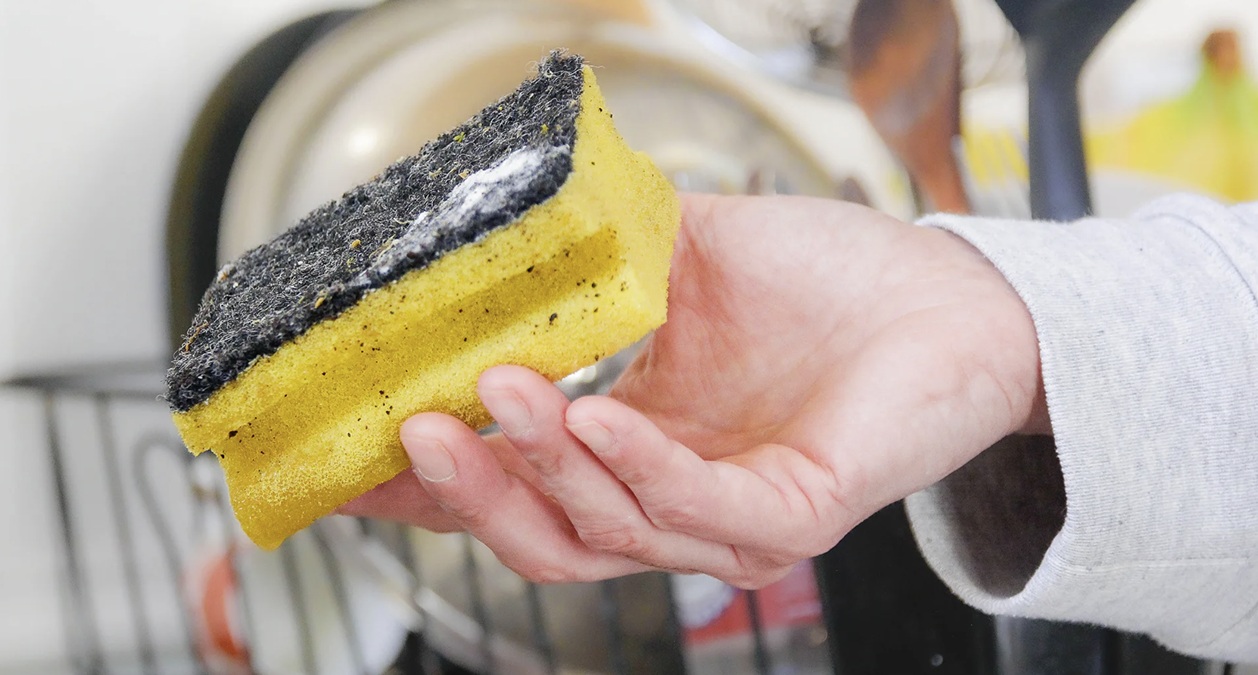When it comes to cleaning dishes, the humble kitchen sponge is a household staple. But did you know that this everyday tool is also a paradise for bacteria? Warm, damp, and filled with food crumbs, sponges provide the perfect environment for microbes to thrive.
In fact, research shows that your sponge could be teeming with billions of bacteria, raising the question: should you ditch the sponge and opt for a brush instead?
A Bacterial Playground
Kitchen sponges are a hotspot for microbial life. In 2017, microbiologist Markus Egert from Furtwangen University in Germany discovered that used sponges can harbor up to 362 species of bacteria, with densities reaching 54 billion bacteria per square centimeter—comparable to the bacterial load in a human stool sample.
The sponge’s porous structure, with its countless holes and pockets, creates ideal niches for bacteria to settle and multiply.
A 2022 study by Lingchong You, a synthetic biologist at Duke University, further confirmed this. Using computer models and experiments with E. coli, his team found that sponges with varying pore sizes encourage even more microbial growth.
“For microbes, you have individualists that like to grow alone and others that need company. A sponge’s structure makes everyone happy,” explains Egert.
Are Sponge Bacteria Harmful?

While the idea of billions of bacteria in your sponge might sound alarming, not all bacteria are harmful. Many are harmless and even beneficial. However, Egert’s research identified that five of the ten most common bacteria in sponges are closely related to species that can cause infections in people with weakened immune systems.
Cleaning methods like microwaving or soaking in hot, soapy water can reduce bacterial load, but they also create a survival-of-the-fittest scenario. Resistant strains may thrive, making cleaning less effective over time. “Cleaning measures might lead to a selection process where the survivors grow back in larger numbers,” says Egert.
Thankfully, harmful bacteria like Salmonella and E. coli, which are linked to food poisoning, are rare in sponges. Jennifer Quinlan, a food safety professor at Prairie View A&M University, found that only 1-2% of sponges tested contained bacteria associated with foodborne illnesses. However, if pathogens like Salmonella do find their way into a sponge, its structure allows them to flourish.
Brushes: A More Hygienic Alternative?
Brushes are also easier to clean and maintain. “A brush is much better because it contains less bacteria and dries out more easily. It’s also easier to clean,” says Egert.
Tips for Sponge Hygiene
If you prefer to stick with sponges, there are ways to minimize bacterial growth:
- Replace sponges weekly to maintain hygiene.
- Clean sponges regularly by microwaving them for a minute or running them through the dishwasher.
- Avoid leaving sponges in the sink; let them dry completely between uses.
- Squeeze out moisture and remove food crumbs to reduce bacterial feasting grounds.
The Verdict
While kitchen sponges are not inherently dangerous, their structure makes them a breeding ground for bacteria. For those concerned about hygiene, switching to a brush may be a smarter choice. Brushes dry faster, harbor fewer bacteria, and are easier to clean, making them a more sanitary option for your kitchen.
So, the next time you reach for a sponge, consider whether it’s time to make the switch. Your dishes—and your health—might thank you.